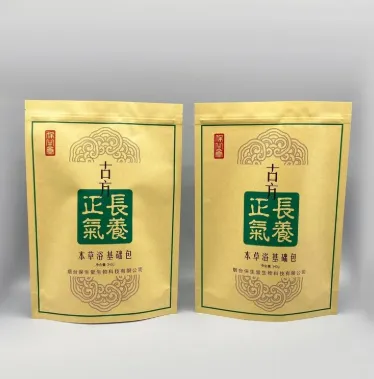Polyethylene packaging bags, as a ubiquitous packaging material, play a crucial role in modern society. From food packaging, commodity transportation to industrial applications, almost all industries rely on its low cost, ease of processing, and good physical properties. However, the widespread use of PE packaging bags has also brought serious environmental problems, posing potential threats to ecosystems and human health. This article aims to explore the functional characteristics of PE packaging bags and analyze their impact on the environment, in order to provide reference for future sustainable development.

The reason why PE packaging bags are widely used is due to their excellent functional characteristics
Firstly, PE bag packaging has good barrier properties, which can effectively prevent oxygen, water vapor, etc. from entering the interior of the packaging, thereby extending the shelf life of food and other products. Secondly, polyethylene is easy to process into packaging bags of various shapes and sizes to meet the packaging needs of different products. In addition, polyethylene material has certain strength and toughness, and can withstand certain pressure and impact, protecting goods during transportation. Finally, the relatively low production cost of polyethylene makes it an affordable packaging choice.
The widespread use of PE packaging bags has brought many negative impacts to the environment
The most prominent issue is plastic pollution. Due to the difficulty of natural degradation of PE coated paper pouch materials, a large amount of discarded packaging bags eventually enter landfills, oceans, and other natural environments. These plastic wastes will persist for hundreds or even thousands of years, causing long-term pollution to soil, water bodies, and wildlife.
The production process of PE packaging bags also consumes a large amount of fossil fuels and energy, and generates greenhouse gases, exacerbating climate change
Burning discarded PE pouch packaging bags can release toxic substances, causing pollution to air quality. The generation and accumulation of microplastics are even more concerning, as they can enter the human body through the food chain and may pose potential hazards to human health.
In order to reduce the impact of PE packaging bags on the environment, multiple measures need to be taken
Firstly, biodegradable or biodegradable alternative materials should be actively promoted, such as plastic packaging bags produced using bio based raw materials. Secondly, it is necessary to strengthen the recycling and utilization of discarded plastic packaging bags, improve the recycling rate, and use them for the production of recycled plastic products. In addition, it is necessary to reduce the use of plastic packaging bags from the source, encourage the use of reusable packaging materials, and strengthen consumer awareness education on environmentally friendly packaging.
In summary, although pa pe plastic bags meet the packaging needs of modern society in terms of functionality, their impact on the environment cannot be ignored. We need to face up to this issue and find more environmentally friendly and sustainable packaging solutions through technological innovation, policy guidance, and public participation, in order to achieve a balance between economic development and environmental protection. Only in this way can we leave a clean and healthy environment for future generations while enjoying convenience.
PE Packaging Bag FAQs
What is a PE packaging bag?
PE (Polyethylene) packaging bag is a flexible packaging made of polyethylene plastic, which has the characteristics of lightweight, waterproof, and strong flexibility. According to different densities, it is mainly divided into:
HDPE (High Density Polyethylene): High hardness, used for shopping bags and vest bags.
LDPE (Low Density Polyethylene): softer and commonly used in food packaging and stretch films.
LLDPE (Linear Low Density Polyethylene): Strong tear resistance, used for heavy-duty packaging bags.
What are the common types of PE packaging bags?
Flat Bag: Simple sealing, used for packaging clothing and small items.
T-shirt Bag: With a handle, commonly found in supermarkets and retail stores.
Ziplock Bag: Can be resealed and used for food and stationery.
Trash Bag: Thickened design, including black/color options.
Bubble Bag: lined with bubble wrap, used for shock-absorbing packaging.
What are the advantages of PE packaging bags?
Low cost: Low raw material prices and high production efficiency.
Waterproof and moisture-proof: suitable for packaging moisture-proof products such as food and cosmetics.
Customizable: Printable patterns and adjustable thickness (e.g. 0.03mm~0.2mm).
Lightweight and durable: tear resistance is better than ordinary plastics (such as PP bags).
What are the main application areas of PE packaging bags?
Retail industry: shopping bags, clothing bags, express packaging.
Food industry: bread bags, vegetable preservation bags, frozen food packaging.
Industrial field: chemical product liner bags, garbage collection.
Household daily use: storage bag, garbage bag, dust cover.
How to solve the environmental issues of PE packaging bags?
Recyclable: PE material is recyclable and needs to be classified for recycling.
Biodegradable PE: Add degradation agents (such as oxidized biodegradable PE).
Thin design: Reduce material usage through process optimization.
Alternative solution: Promote reusable cloth bags or biodegradable PLA bags.